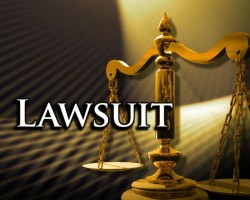
SUPERIOR COURT OF NEW JERSEY
CHANCERY DIVISION
MERCER COUNTY
JOHN
J. HOFFMAN,
Acting Attorney General of New Jersey on
behalf of
AMY KOPLETON,
Acting Chief of the New Jersey Bureau of
Securities,
Plaintiff,
v.
CREDIT SUISSE SECURITIES (USA) LLC,
CREDIT SUISSE FIRST BOSTON
MORTGAGE SECURITIES CORP., and DLJ
MORTGAGE CAPITAL, INC.
Defendants.
SUMMARY
1. This case arises out of defendants’ sale of billions of dollars in toxic residential
mortgage backed securities (“RMBS”) trust certificates to investors. These RMBS trusts
included, but are not limited to, the Home Equity Mortgage Trusts (“HEMT”) Series 2006-4,
2006-5,2006-6,2007-l and 2007-2, and Home Equity Asset Trusts (“HEAT”) Series 2006-4,
2006-5, 2006-6, 2006-7, 2006-8, 2007-I, 2007-2, and 2007-3. These securities were offered
between May 1,2006 and April 30,2007, through offering materials that misrepresented to
investors that, among other things: (1) the mortgages underlying the trusts would be in
“substantial compliance” with the unden¡witing standards of the originators of the loans; (2) each
loan originator not affiliated with Credit Suisse would originate loans “in accordance with
accepted practices and prudent guidelines;” (3) defendants employed “certain quality assurances
designed to ensure” that the correct loan underwriting criteria for certain originators would be
“properly applied;” and (4) none of the loans had a negative equity because their combined loan
to value (“CLTV”) ratios did not exceed one hundred percent.
2. These representations were false and misleading, and omitted to disclose material
information,inat least the following respects: (1) many of the loans were not in “substantial
compliance” with applicable underwriting guidelines, which had been largely disregarded in
order to maximize the amount of loans in the offering and therefore defendants’ profits; (2) the
loans had not been originated by entities that conducted themselves “in accordance with accepted
practices and prudent guidelines,” but had instead been acquired from originators with poor track
records characfeized by alarming levels of defaults and delinquencies; (3) signif,rcant numbers
of loans had a negative equity as reflected by the most recent CLTV ratios in defendants’
possession; (4) defendants’ traders had warned about the high risks of certain types of the loans
being securitized and had even eliminated them from their matrix of products they were willing
to purchase; and (5) defendants were pocketing for themselves tens of millions of dollars in
settlements with originators due to defects in loans that had been securitized without passing
those funds along to the trusts and the investors themselves. These facts were material because
they would have disclosed that the mortgages that made up the RMBS posed a high risk of
delinquency and default, which could – and ultimately did – inflict enorrnous losses on the
investors who purchased these securities.
3. Within a relatively short period of time after their issuance, the HEMT and HEAT
trusts reported skyrocketing rates of delinquency and default on the underlying loan pools. This
resulted in significantly reduced distributions to investors, and write downs in the principal of
underlying loans as they veered into foreclosure or bankruptcy. Standard & Poor’s, Inc. (“S&P”)
and Moody’s Investor Services, Inc. (“Moody’s”) (together the “Ratings Agencies”) ultimately
downgraded virtually all of these securities from investment grade to junk status. One of the
reasons cited for the downgrades was the “aggressive underwriting” practices in the initial
origination of the loans. Subsequent investigations and analyses of certain of these loan pools
have shown that many of the loans had violated the underwriting guidelines of the sellers who
originated the loans, but had nevertheless been waived into the trusts by defendants even though
third-party due diligence firms retained by defendants had found that many of the loans had been
originated in violation of the applicable guidelines. Billions of dollars in investor funds have
been lost as a result.
4. While this Complaint focuses its discussion on HEMT Series 2006-4,2006-5,
2006-6,2007-I and2007-2, and HEAT Series 2006-4,2006-5,2006-6,2006-7,2006-8,2007-1,
2007-2, amd 2007-3, upon information and belief, Credit Suisse’s other RMBS trusts issued
during this time period had similar records of false and misleading statements and material
omissions in their offering materials and had similar delinquency and default experiences.
[…]
© 2010-19 FORECLOSURE FRAUD | by DinSFLA. All rights reserved.



